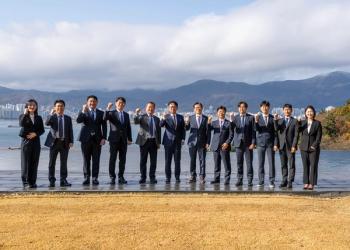
POWERGEN 2024: An Overview of Nuclear, SMR Technology
Kevin Huberty of Sargent & Lundy provided a comprehensive review of SMR technology, including the various models, ongoing projects, government regulations, and major vendors within the industry.
Senior Vice President and Project Director at Sargent & Lundy, Kevin Huberty, led a high-level session, Small Modular Reactor (SMR) Technology and Market Overview on day two of POWERGEN 2024. Huberty provided a comprehensive review of SMR technology, including the various models, ongoing projects, government regulations, and major vendors within the industry.
Why Nuclear?
The session began with Huberty addressing a commonly asked question throughout the power industry and American public: Why nuclear? Nuclear energy has often been associated with power generation disasters, but modern passive-safety features of SMRs have further improved the safety of nuclear technology.
The current share of nuclear power in the United States, and abroad, suggests that it can be relied upon. “There are approximately 430 nuclear power reactors in the world today, and a majority of them were built a while ago, many in the 70s and 80s. In the United States, we have 94, which makes up about 20% of our total power, but 50% of our carbon-free power. Worldwide, there are roughly 60 power reactors under construction,” said Huberty.
Aside from supporting the stability and safety of the nuclear industry through current statistics, Huberty discussed the power generation benefits of the technology. Due to the power density of nuclear fuel, plants make efficient use of land. The power does not produce direct carbon emissions, and, despite its reputation with some, has a strong safety record.
“Any kind of metric you look at, nuclear safety is excellent. Deaths due to accidents and air pollution per kilowatt hour is on par with wind and solar. It’s reliable, baseload, 24/7 power,” Huberty added.
SMR Basics
The specifics of SMRs further the cause for the increased integration of nuclear energy. SMRs have enhanced safety measures with passive core-cooling technology, lowering the need for redundancy and safety-related equipment. The modularization of the technology will help construction schedules to meet expectations, and use of digital controls and security-by-design will reduce operating costs.
In addition to producing baseload power and heat for industrial applications, Huberty claimed that SMRs offer a range of flexibilities: “Citing the advantages, a big one is the smaller footprint of these reactors, along with expected smaller emergency planning zones, make them more flexible for various locations. SMRs can be used for baseload power, and they can power up and down faster than your larger nuclear reactors for load-following of renewables.”
Huberty then went on to distinguish multiple SMR technology variants on offer from major vendors. Light-water SMRs and advanced reactors are typically in the range of 300 MWe, but microreactors lie at the lower end of power output, typically between 1-10 MWe. Light-water SMR variants are a proven technology that use water coolant and conventional fuels, while advanced reactors (AR) often employ more sophisticated nuclear features.
“These are Generation 4 and more revolutionary for commercial applications. Most of these, have been proven at a smaller scale or a lab scale. ARs use different coolants such as liquid metals and gas instead of water. To be efficient, they use HALEU fuel, which is high-assay low-enriched uranium that offers anywhere from 5-20% enrichment,” said Huberty.
Steps for Licensing
SMR licensing has perhaps been the largest hurdle for the industry, as the Nuclear Regulatory Commission (NRC) requires extensive validation of SMRs prior to any land or technology permits being granted. Citing a recent domestic project, it can take 8-10 years to obtain the necessary NRC licenses and construct the plant from the point of initial capital investment.
Huberty added that a company can also obtain a license for the site and technology through a COL application: “Once you decide on the technology and the location, you can go to the NRC for a combined license. This is site-specific, and you only need a single license to construct and operate the plant. This is an approach that Southern Nuclear Company used for its Vogtle 3 and Vogtle 4 AP1000 nuclear units.”
Although nuclear regulations are considered strict in comparison to the other power-generation industries, the U.S. government has been supporting the technology through current legislation. The Inflation Reduction Act gave tax incentives for those developing advanced nuclear power to cut down on the cost of plant construction, as well as funding for HALEU fuel supply. The Advanced Reactor Demonstration Program also ensures that nuclear production is incentivized, financially supported, and thoroughly researched.
Newsletter
Power your knowledge with the latest in turbine technology, engineering advances, and energy solutions—subscribe to Turbomachinery International today.





